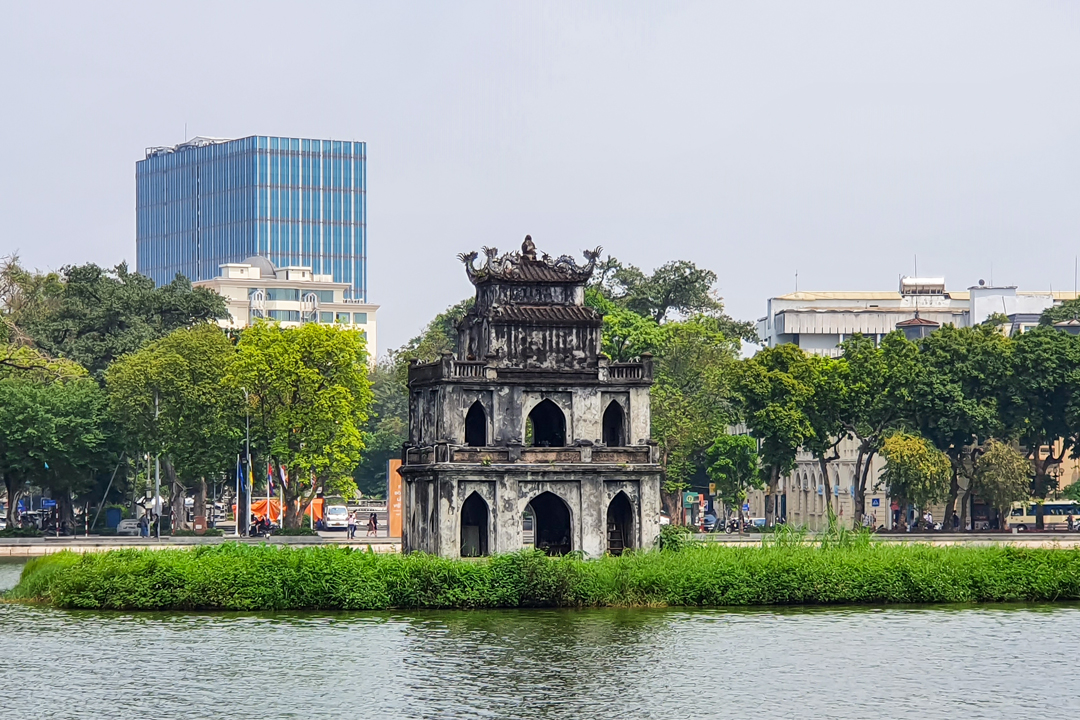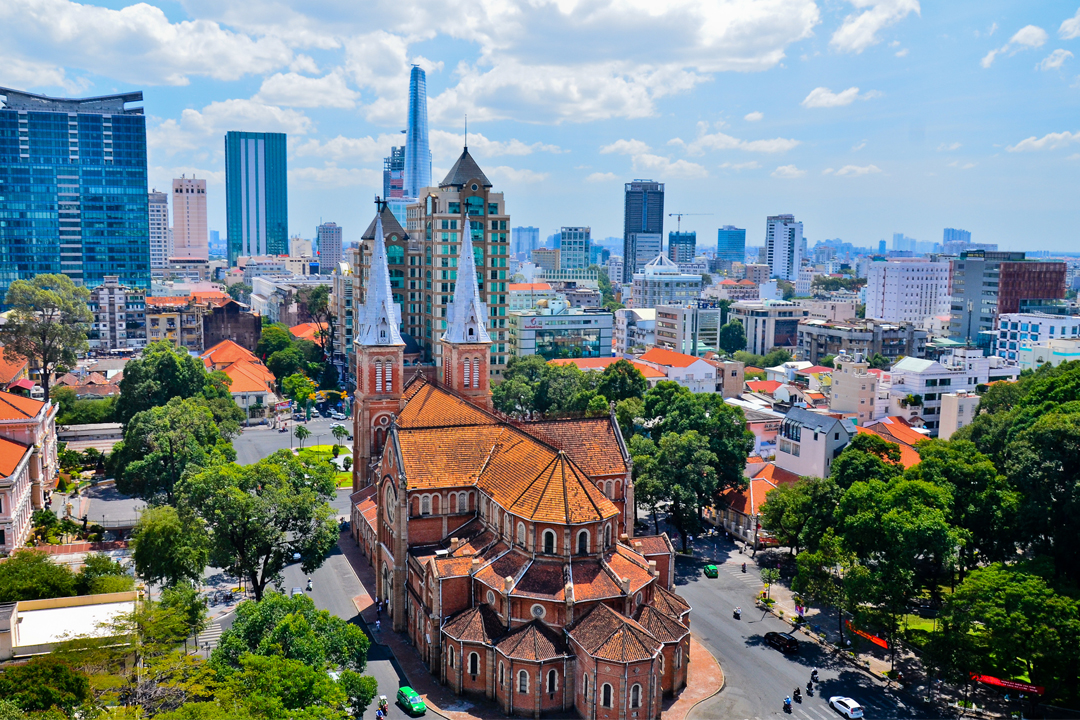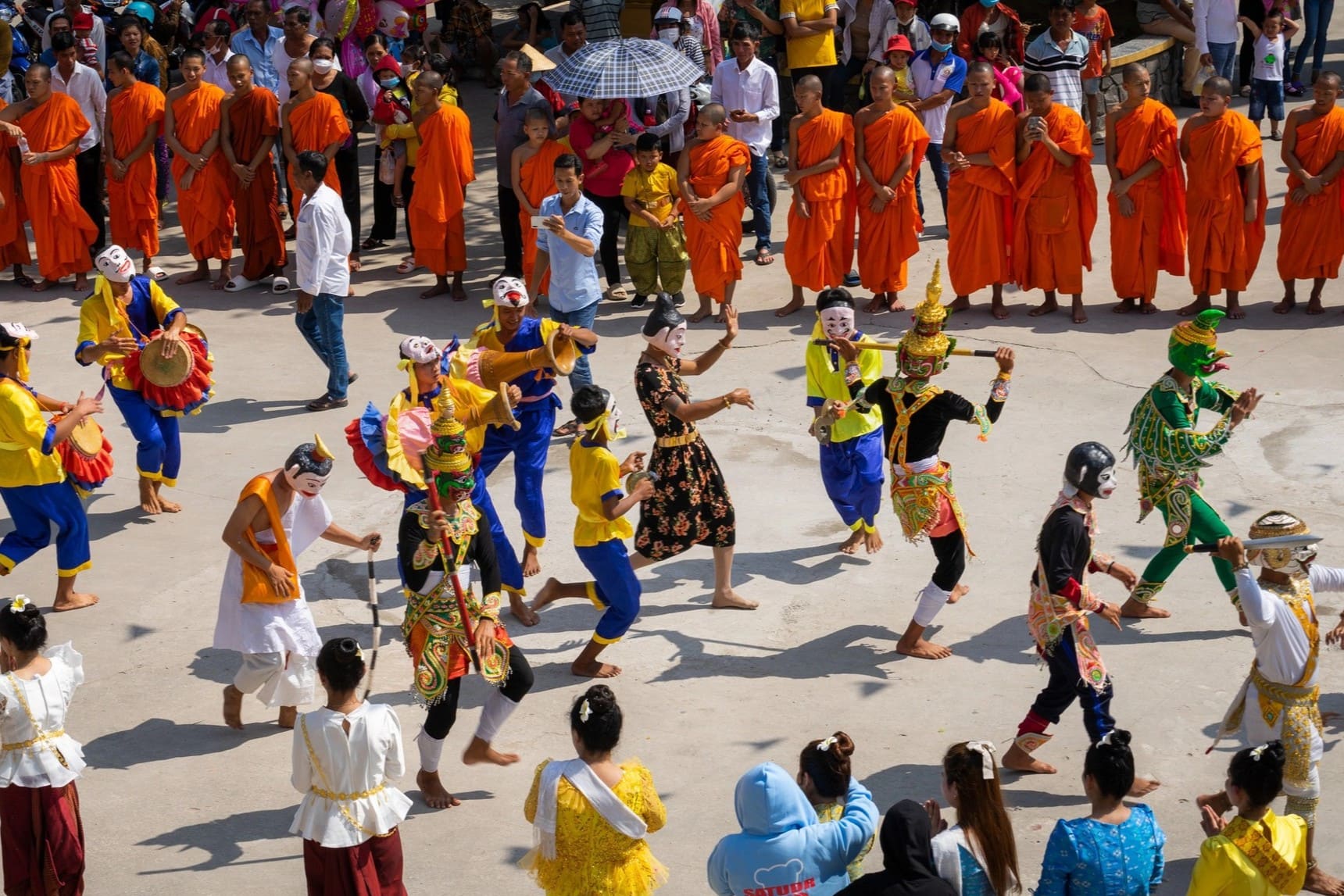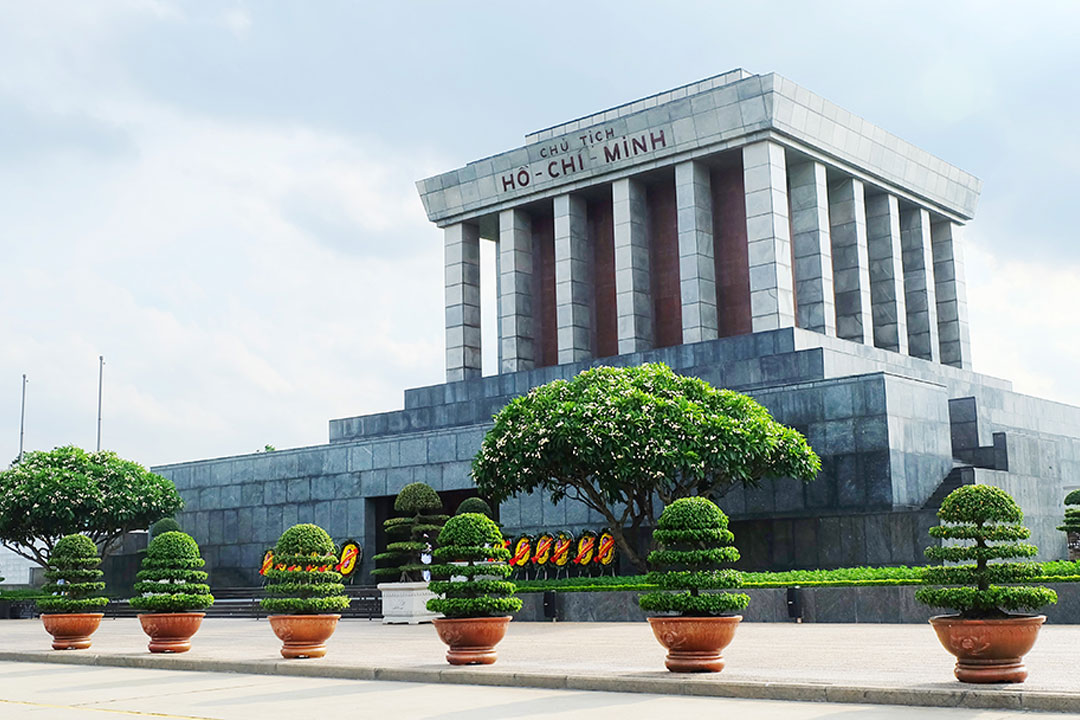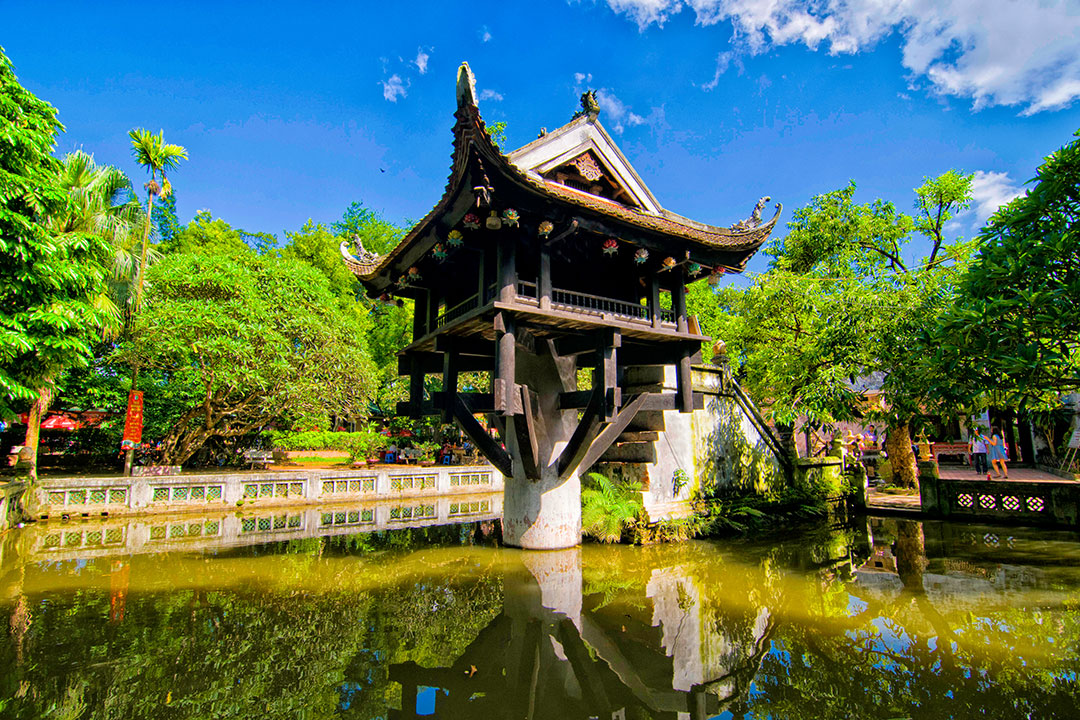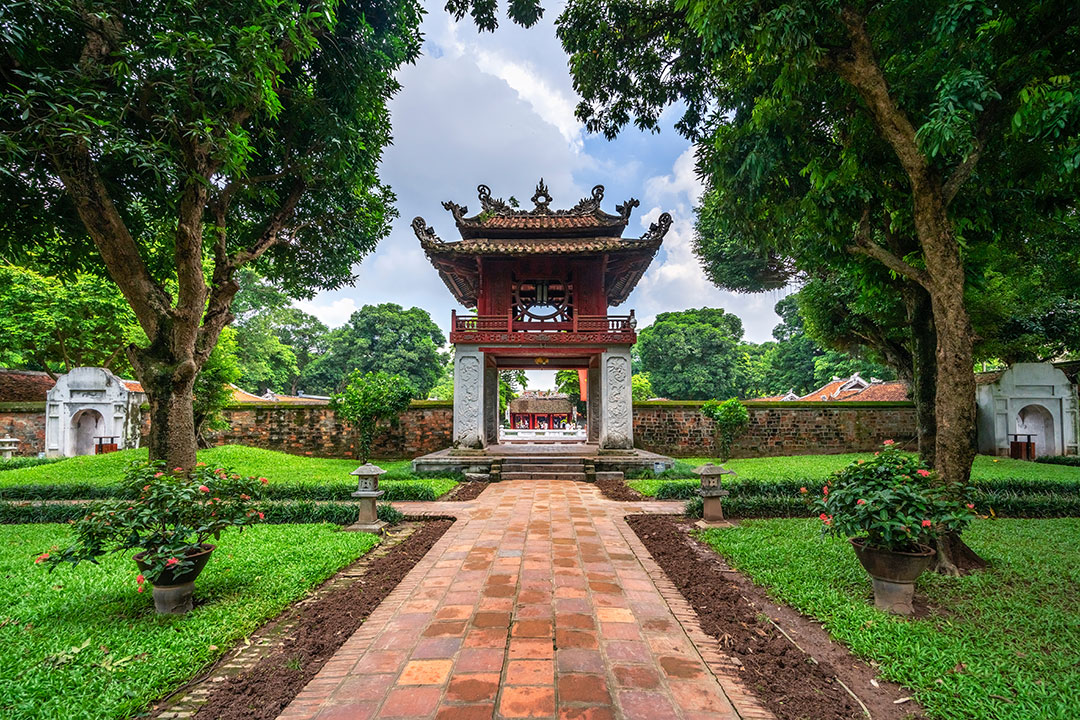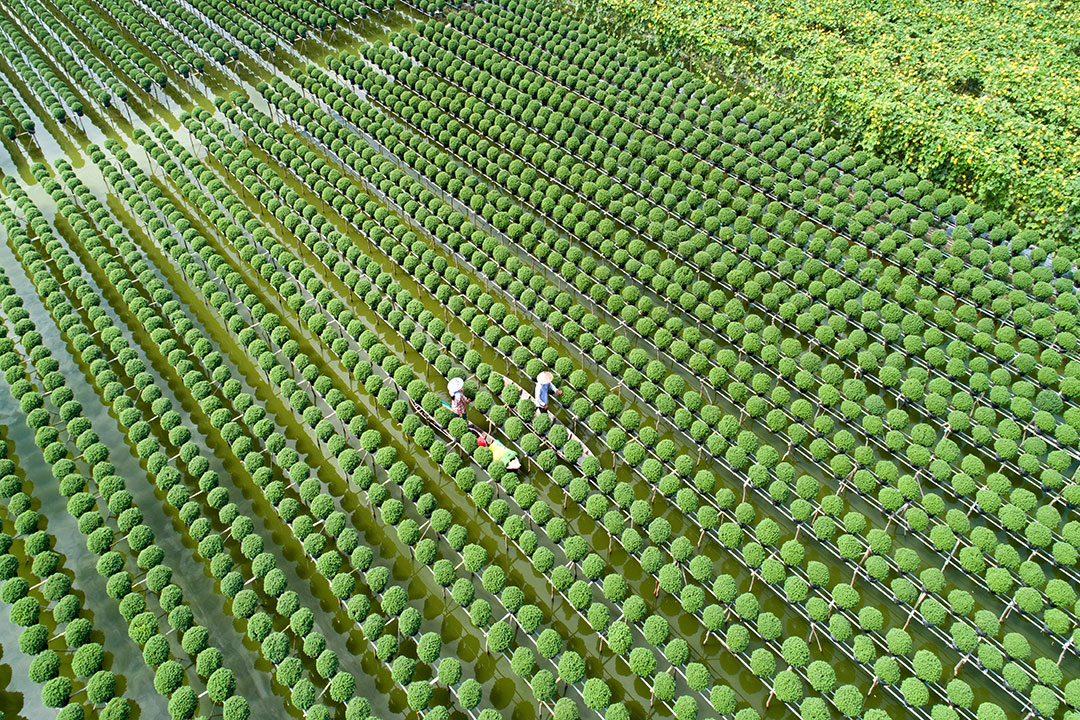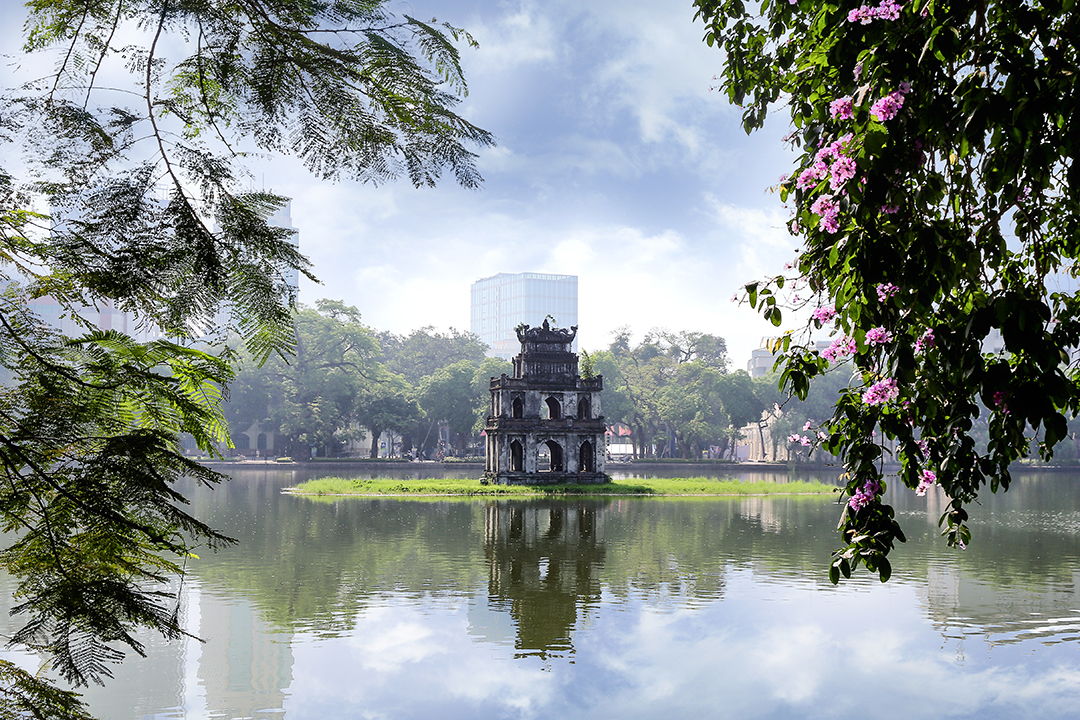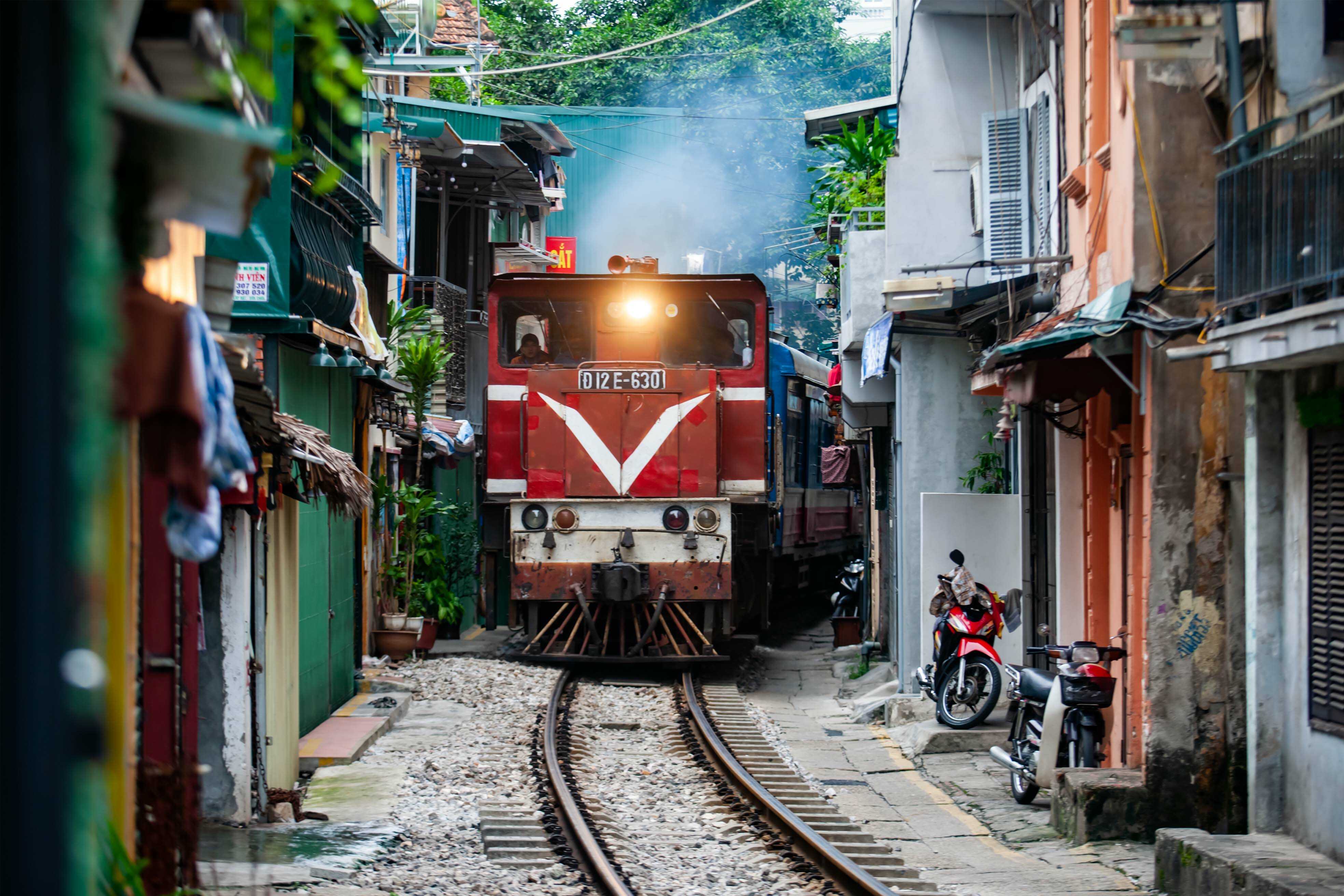Hanoi Museum: Location, History, Architecture, Things To Do & Important Notes
Located on the outskirts of Hanoi, the Hanoi Museum offers visitors a unique cultural treasure within the vibrant capital. It is a must-visit destination for history lovers, where you can experience a journey blending ancient traditions with rapid modernization. As one of Vietnam’s leading cultural landmarks, the museum is about displaying artifacts and telling stories that have shaped generations.
Introduction to the Hanoi Museum
Location: Pham Hung Street, Tu Liem Ward (Pham Hung Street, Me Tri Ward, Nam Tu Liem District, Hanoi)
Hanoi Museum stands as a prominent cultural landmark. Since its inauguration in October 2010, the museum has grown into one of the country’s most significant repositories of history and heritage. Its distinctive inverted pyramid architecture is visually striking and thoughtfully designed to enhance the visitor experience. As guests ascend the building’s four expansive floors, they encounter increasingly larger exhibition spaces, offering a unique layout that sets it apart from traditional museums.
Inside, the Hanoi Museum houses an extensive collection of over 50,000 artifacts that span the city’s history from prehistoric times to the present day. These displays provide a vivid narrative of Hanoi’s cultural journey, with exhibits ranging from ancient ceramics and traditional crafts to revolutionary relics and modern artworks. The collection reflects the diverse influences that have shaped Hanoi over millennia, including chinese dynasties, French colonial rule, and enduring indigenous traditions. It offers visitors an in-depth perspective on the city’s evolving identity.
The museum welcomes guests from Tuesday to Sunday, opening in the morning from 8:00 AM to 11:30 AM and again in the afternoon from 1:30 PM to 5:00 PM. It remains closed on Mondays, and as of the latest update, it is temporarily not operating. Entry is reasonably priced at 30,000 VND per person, making it an accessible cultural attraction for both locals and tourists. Exhibits are accompanied by bilingual descriptions in Vietnamese and English, and photography is allowed in most areas, provided flash is not used.
The museum provides clean restrooms, a helpful info desk, and a small cafe for visitor comfort. Throughout the year, the Hanoi Museum also organizes special exhibitions and cultural events, adding fresh dimensions to its offerings and encouraging repeat visits. If you are a history enthusiast or a curious traveler, the museum provides a compelling and educational window into the soul of Hanoi.

Hanoi Museum on Pham Hung Street showcases over 50,000 artifacts tracing Hanoi’s rich history in a striking inverted pyramid building
The history and cultural significance of the Hanoi Museum
The Hanoi Museum, established in 1982, is a key cultural milestone in Vietnam's capital. This decision marked the beginning of a visionary cultural project that would take decades to fully realize in its current magnificent form. The museum emerged from a desire to create a centralized space where the rich heritage of Hanoi could be properly preserved and presented to both locals and international visitors.
The museum reached its defining moment in October 2010 when it was formally inaugurated as part of the grand Millennial Anniversary celebrations of Thang Long - Hanoi. This timing was deliberate and symbolic, aligning the museum's opening with the commemoration of 1,000 years since Emperor Ly Thai To established Hanoi as Vietnam's capital in 1010. The museum thus serves as a modern monument to a millennium of cultural evolution and historical significance.
In 2016, Business Insider named the Hanoi Museum one of the world’s 36 most beautiful museums. This prestigious acknowledgement highlighted the museum's unique design and cultural importance on a global stage. The recognition helped cement the museum's reputation as not just a local cultural treasure but an institution of international standing.
As a major cultural project for Vietnam's capital, the museum fulfills several important roles in Vietnamese society:
- cultural preservation: Safeguarding thousands of artifacts that might otherwise be lost to time
- Historical education: Providing context and understanding of Hanoi's evolution through different eras
- National identity: Strengthening Vietnamese cultural pride through tangible heritage connections
- Tourism development: Serving as a premier destination for visitors seeking authentic cultural experiences
- Research foundation: Offering scholars access to valuable historical materials and artifacts
The museum stands as a testament to Hanoi's commitment to honoring its past while building its future. Through careful curation and thoughtful presentation, it helps visitors understand the complex layers of history that have shaped this ancient city. Spanning from prehistoric relics to modern displays, the Hanoi Museum intertwines the stories that create Vietnam’s vibrant cultural heritage.
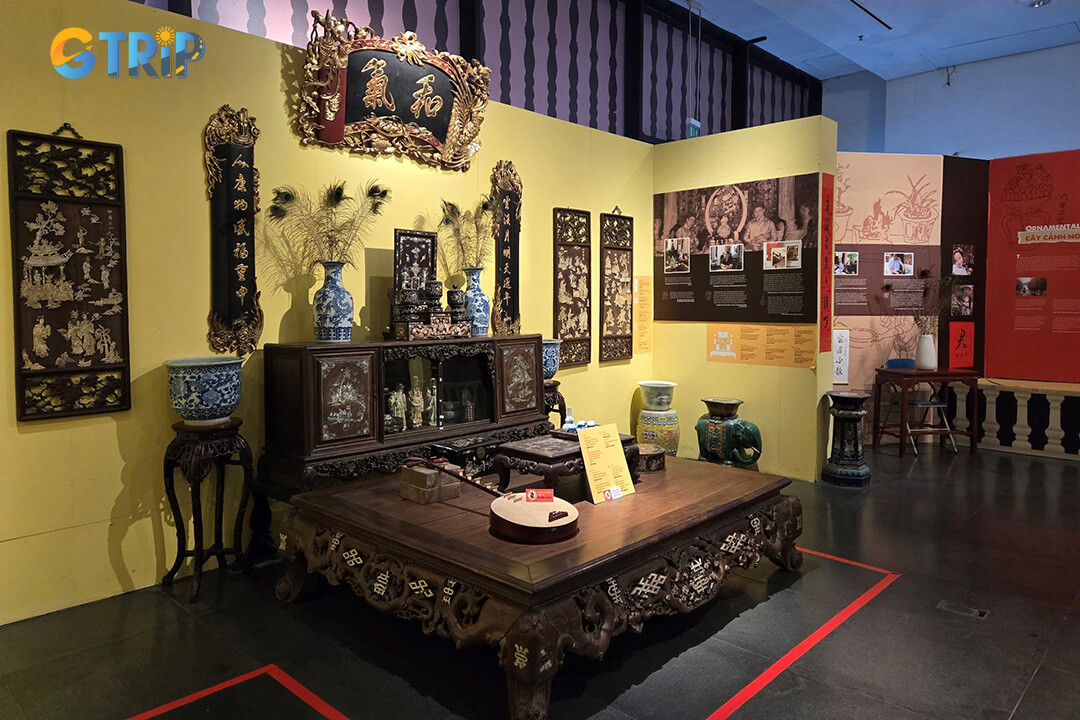
Founded in 1982 and opened in 2010, the Hanoi Museum preserves the city’s rich heritage and is famed for its striking design
The architecture of Hanoi Museum
The Hanoi Museum features a remarkable inverted pyramid design that has become a modern architectural icon in Vietnam's capital. Designed by German architects Meinhard von Gerkan and Nikolaus Goetze, this unique structure reflects international collaboration in Vietnam’s cultural infrastructure. The building covers nearly 54,000 square meters, making it one of Vietnam's largest museums and a significant landmark in the city's landscape.
Standing at 30.7 meters high, the museum comprises four floors and two basement levels, creating a spacious environment for its extensive collections. The distinctive inverted pyramid symbolizes Hanoi's dynamic growth and forward-looking spirit, representing both stability and innovation. Each higher floor projects further outward than the one below, creating natural shading for exhibits and providing an innovative solution to Vietnam's tropical climate.
One of the most striking interior features is the central circular atrium that connects all levels through a graceful spiral ramp. This design element eliminates the need for traditional staircases, offering visitors a flowing journey through Vietnamese history and culture. The ramp design also ensures accessibility for all visitors while creating a visually stunning core to the building. The museum's layout is thoughtfully organized across its four main floors, each dedicated to specific collections and themes:
First floor - Featured antiquities and souvenir space:
- Houses impressive ceramic and bronze artifacts, including intricately carved pillars with dragon motifs from the Ly dynasty
- Displays ceramics spanning the Ly, Tran, and Le dynasties, showcasing Vietnam's rich pottery traditions
- Features a well-stocked souvenir shop at the end of the hall where visitors can purchase cultural mementos
Second floor - Tien Lang Long exhibition:
- contains precious relics from the ancient co Loa citadel, Vietnam's first fortified city
- Showcases historically significant bronze drums that date back thousands of years
- Displays the sacred co Loa bracelet, an important symbol in Vietnamese folklore and history
- Houses the historical Mai Thanh bell, notable for its craftsmanship and cultural significance
Third floor - Private collections exhibition:
- Presents remarkable private collections donated by prominent Vietnamese businessmen and collectors
- Features exquisite examples of Bat Trang ceramics, representing a tradition dating back to the 14th century
- Displays jewelry and ornamental items from the Ly and Tran dynasties, showcasing ancient craftsmanship
Fourth floor - Old Hanoi historical documents:
- Preserves historical materials documenting Vietnam's resistance against French and American invasions
- contains a rich collection of paintings and photographs contrasting old and modern Hanoi
- Houses functional spaces, including conference rooms, art studios, and a comprehensive research library
- Provides flexible temporary exhibition spaces that host rotating collections and special events
The glass facade that wraps around the building allows natural light to illuminate the exhibits while offering visitors panoramic views of the surrounding landscape. This thoughtful integration of interior and exterior spaces makes the museum a container for artifacts and an experience in itself.
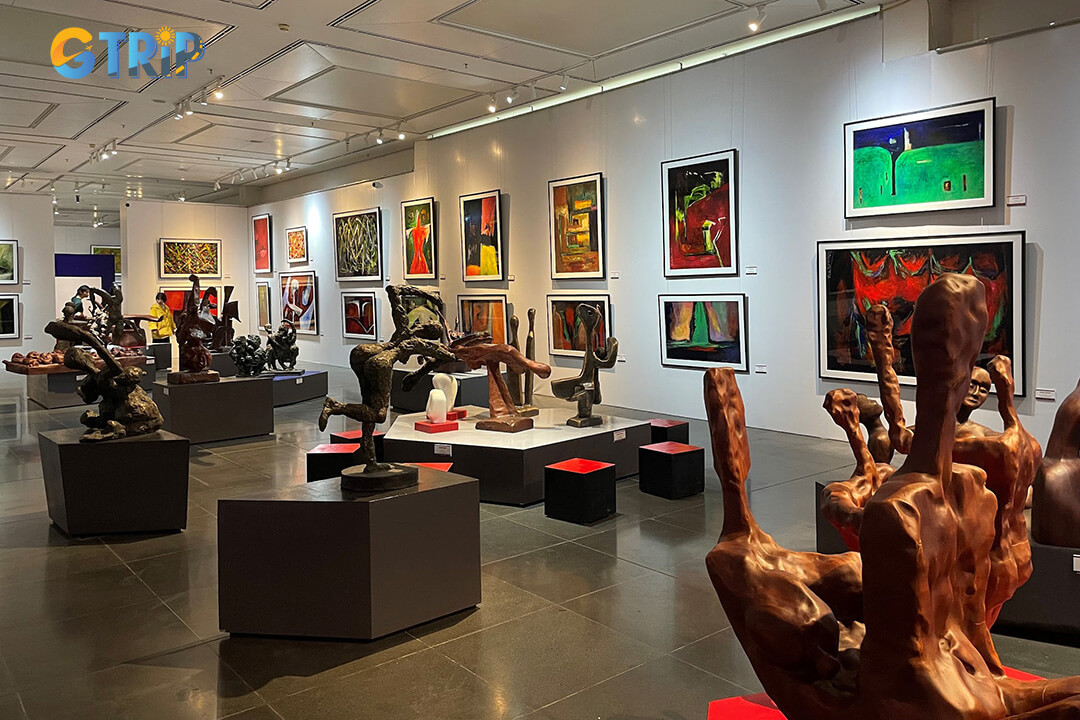
The Hanoi Museum’s striking inverted pyramid design houses four expansive floors of exhibits, blending modern architecture with Vietnam’s rich cultural heritage
5 things to do at Hanoi Museum
The Hanoi Museum offers visitors a multifaceted cultural experience that goes beyond traditional museum visits. With its striking architecture, engaging exhibitions, and interactive programs, the museum offers many ways to experience Vietnam’s rich heritage. You can engage with both historical artifacts and contemporary expressions of Vietnamese culture through various activities tailored to different interests.
1. Admire the modern architecture
The Hanoi Museum's distinctive inverted pyramid design stands as an architectural marvel that immediately captures visitors' attention. This four-story structure expands as it rises, creating a unique silhouette against Hanoi's skyline that symbolizes the growth and expansion of Vietnamese culture. The building's innovative design features expansive glass walls that flood the interior with natural light, creating a bright and welcoming atmosphere for exploring artifacts.
You can appreciate how the architects blended contemporary design elements with traditional Vietnamese symbols throughout the structure. The central courtyard echoes traditional village layouts, while the building's curves symbolize the Red River's influence on Hanoi. Architecture enthusiasts will notice how the building's form creates different perspectives and viewing angles as you move through the exhibition spaces.

The Hanoi Museum’s inverted pyramid design blends modern architecture with traditional symbolism, creating a striking landmark that reflects Hanoi’s cultural
2. Explore the permanent and temporary exhibitions of Hanoi Museum
The permanent collections at Hanoi Museum offer a comprehensive journey through the capital's 1,000-year history. You can view over 50,000 artifacts arranged chronologically across four floors, with each level focusing on different historical periods and cultural themes. The ground floor showcases prehistoric discoveries, including stone tools and pottery from the Dong Son civilization that flourished between 1000 Bc and 100 AD.
Upper floors feature exhibits dedicated to imperial artifacts, traditional crafts, and revolutionary history that shaped modern Vietnam. Highlights include carved artifacts from the Ly and Tran dynasties, northern ethnic costumes, and independence movement documents. You can observe how daily life in Hanoi evolved through displays of traditional household items, trade tools, and urban planning models.
The temporary exhibition halls host rotating displays focused on contemporary Vietnamese art, international cultural exchanges, and special thematic collections. Recent exhibits feature Hanoi’s transformation photos, international collaborations, and emerging Vietnamese artists. The museum regularly hosts cultural festivals celebrating traditional holidays, offering performances of folk music and dance that bring history to life.
3. Take a cultural walk in the outdoor garden
The museum's spacious outdoor garden provides a tranquil retreat where visitors can reflect on Vietnam's cultural heritage among carefully arranged historical elements. Ancient stone steles from northern Vietnam temples and villages line the paths, inscribed with historical texts and edicts. These weathered monuments offer glimpses into Vietnam's literary traditions and governance systems dating back centuries.
Traditional agricultural implements displayed throughout the garden illustrate farming techniques that sustained Vietnamese villages for generations. You can see rice-processing equipment, water wheels, and fishing tools arranged in contextual settings that demonstrate their practical applications. The garden features traditional house replicas from Vietnam’s regions, with authentic furnishings showcasing rural life.
4. Join guided tours or educational programs
The museum offers comprehensive guided tours led by knowledgeable staff who provide detailed context and stories behind key artifacts. These tours typically last 60-90 minutes and can be customized to focus on specific historical periods or cultural aspects depending on visitor interests. Foreign language tours in English, French, chinese, Japanese, and Korean are available with booking, making the museum accessible to international visitors.
Specialized educational programs cater to different age groups and interests, from elementary school field trips to scholarly research sessions. These programs often include interactive elements such as:
- Traditional craft workshops where visitors learn techniques for making ceramics, paper fans, or woodblock prints
- cultural performance sessions teaching basic Vietnamese musical instruments or dance movements
- Historical reenactment activities where participants can try on traditional costumes or practice ancient games
Special events marking historical anniversaries or seasonal celebrations often feature expanded programming, including:
- Guest lectures by historians and cultural experts
- Film screenings documenting Vietnam's cultural evolution
- cooking demonstrations of traditional Hanoi cuisine
- calligraphy sessions teaching ancient Vietnamese script
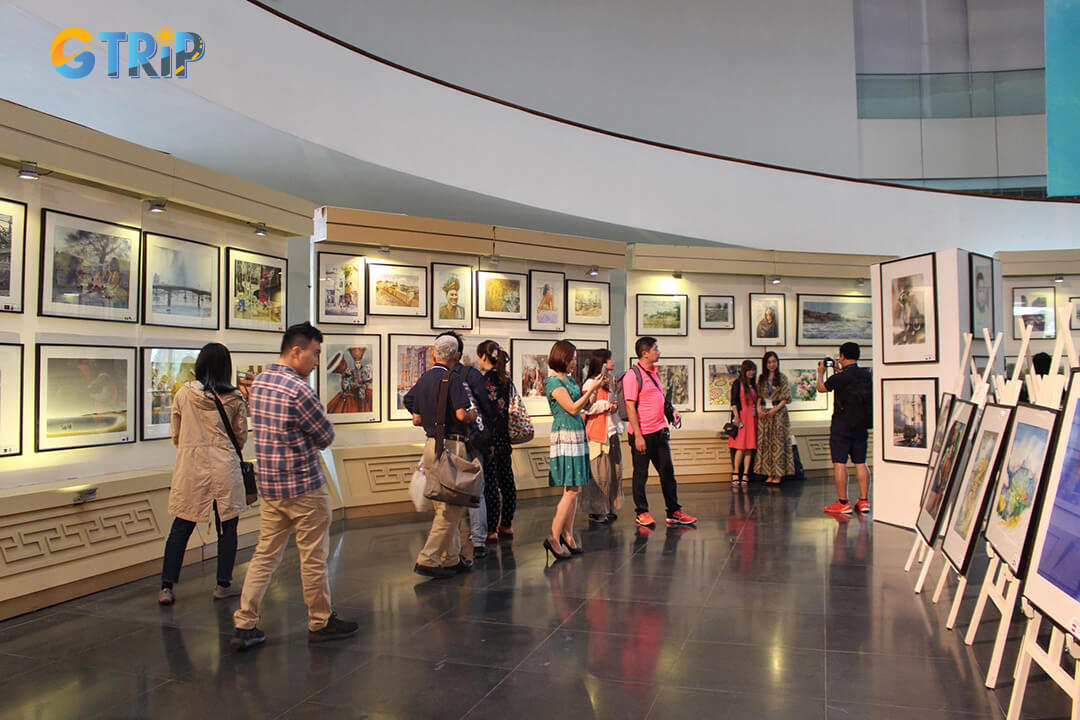
The Hanoi Museum offers guided tours and interactive programs that make history engaging for all ages and accessible to international visitors
5. Take many beautiful pictures at Hanoi Museum
The Hanoi Museum offers numerous photogenic spots that make it popular among both casual visitors and serious photographers seeking unique compositions. The central atrium provides dramatic vertical shots framing the museum's expanding levels against streams of natural light flowing through glass panels. Artifacts displayed against minimalist backgrounds create striking visual contrasts between ancient items and contemporary presentation.
The museum offers several distinctive photo opportunities throughout the property:
| Photo location | Best time | What makes it special |
|---|---|---|
| Inverted pyramid exterior | Early morning | Dramatic shadows and fewer crowds |
| Spiral exhibition ramps | Midday | Natural light filtering through skylights |
| Traditional artifact displays | Anytime | close-up details of intricate craftsmanship |
| Rooftop viewing platform | Late afternoon | Panoramic views of western Hanoi |
| Stone stele garden | Overcast days | Atmospheric lighting highlighting carved texts |
| Reconstructed traditional houses | Morning/afternoon | Authentic settings with historical context |
How to get to Hanoi Museum?
Reaching the Hanoi Museum is straightforward with several transportation options available to visitors. Located on Pham Hung Street in Nam Tu Liem, about 10 km southwest of Hanoi's Old Quarter, the museum is accessible by public transit, taxi, or private vehicle. Each method offers different advantages depending on your budget, time constraints, and comfort preferences.
By bus
Hanoi's public bus system provides an economical and convenient way to reach the museum for budget-conscious travelers. Several bus routes service the area around the Hanoi Museum, making it easily accessible from various parts of the city. Bus number 22B runs from Long Bien bus station through the city center and stops directly in front of the museum entrance.
The 21B bus connects Noi Bai International Airport to the museum area, offering a convenient option for tourists arriving directly from the airport. Routes 60A and 60B travel from Hanoi's southern districts through the city center to the museum. Bus number 50 connects the eastern districts with the museum and passes through several tourist hotspots along the way.
Bus fare typically ranges from 7,000 to 10,000 VND (about $0.30 to $0.45), making it the most affordable option for travelers. Buses generally operate from 5:00 AM until 9:00 PM, with services running approximately every 15 to 20 minutes during peak hours. For the most comfortable journey, try to avoid rush hours between 7:00 - 9:00 AM and 5:00 - 7:00 PM when buses tend to be crowded.
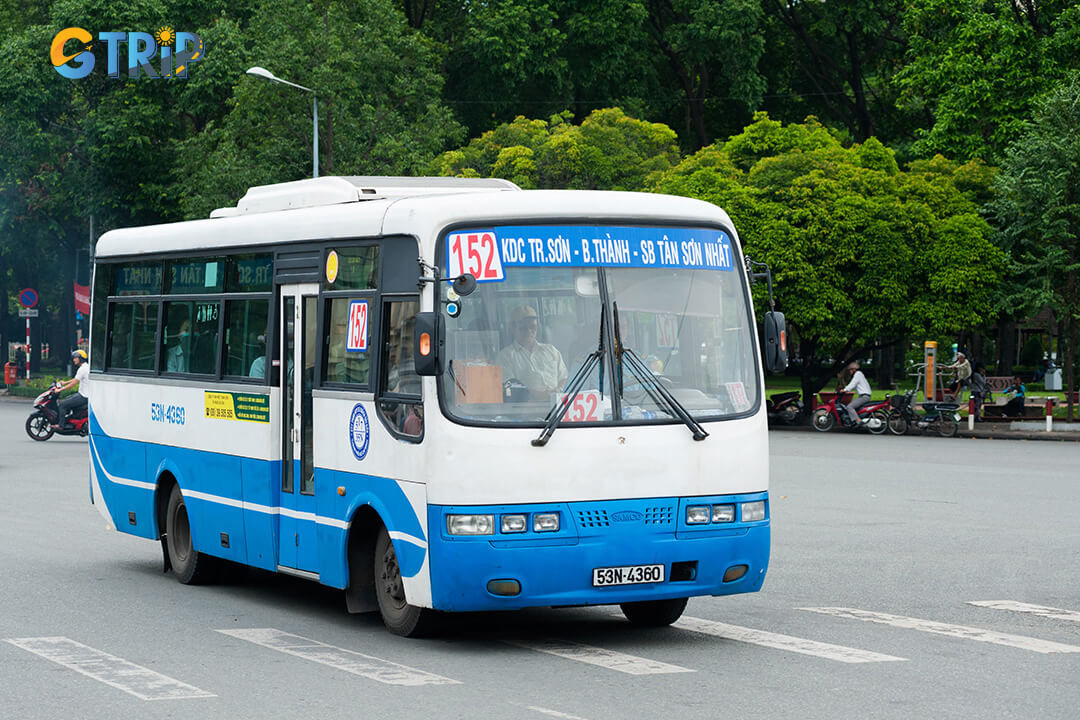
Hanoi’s public buses, including routes 22B, 21B, 60A, 60B, and 50, offer a budget-friendly and convenient way to reach the Hanoi Museum
By taxi
Taking a taxi to the Hanoi Museum offers convenience and comfort, especially for those traveling with family or during inclement weather. Most Hanoi taxis operate with meters, providing a transparent pricing system for tourists unfamiliar with local transportation costs. The journey from the Old Quarter to the museum typically takes 25-30 minutes, depending on traffic conditions.
Reliable taxi companies in Hanoi include Vinasun, Xanh SM, and Mai Linh. Fares start from approximately 12,000 to 15,000 VND per kilometer.
Ride-hailing apps like Grab and Be are also popular alternatives that often offer fixed prices before your journey begins. These services provide the added benefit of not needing to negotiate with drivers or worry about language barriers. Most drivers accept cash payments, though some ride-hailing services allow payment through the app with a linked credit card.
By motorbike or bicycle
Renting a motorbike or bicycle provides flexibility and independence for exploring Hanoi, including visits to the museum. Motorbikes are the preferred mode of transportation for many locals and adventurous tourists, allowing you to navigate the city at your own pace. Most hotels and travel agencies offer motorbike rentals starting from 100,000 - 150,000 VND ($4.50 - $6.50) per day.
The route to the Hanoi Museum is relatively straightforward, following Pham Hung Street from the city center. GPS navigation apps likes Google Maps provide reliable directions to help you navigate Hanoi's sometimes confusing street network. Parking facilities are available at the museum, with fees typically around 5,000 - 20,000 VND ($0.22 - $0.90) for motorbikes.
For environmentally conscious travelers or those seeking exercise, bicycles offer a green alternative for reaching the museum. Many hotels provide bicycle rentals for approximately 50,000 - 80,000 VND ($2.20 - $3.50) per day. The journey from central Hanoi takes about 40 to 50 minutes by bicycle, offering opportunities to experience local life along the route.
Important notes when visiting Hanoi Museum
Ensuring a smooth and enriching experience at Hanoi Museum requires some preparation and awareness of the facility's guidelines. The following practical tips will help you maximize your visit to this architectural marvel while respecting cultural protocols and navigating the space efficiently.
- Check opening hours: The museum is open daily from 8 AM to 5 PM, closed on Mondays.
- Buy tickets in advance: Tickets cost about 30,000 VND (~$1.30) for adults; discounts for students and free entry for kids under 6.
- Visit early: Arrive before 10 AM to avoid crowds and have plenty of time to explore.
- Dress respectfully: Wear smart casual clothes covering shoulders and knees to respect local culture.
- Wear comfortable shoes: You’ll walk a lot across multiple floors.
- Bring light layers: Air conditioning can be cool inside, so dress accordingly.
- Use photography rules: Photos allowed but no flash; don’t touch exhibits.
- Respect quietness: Keep noise levels low for other visitors.
- Secure your belongings: Watch out for pickpockets in busy areas.
- Accessibility: The museum offers ramps, elevators, and wide corridors for easy access.
- Plan for 2-3 hours: There’s a lot to see across four floors.
- Ask staff for help: They are friendly and can assist if needed, especially for visitors with special needs.

Plan your Hanoi Museum visit by arriving early, dressing respectfully, and allowing 2 - 3 hours to explore
Nearby attractions from Hanoi Museum
The Hanoi Museum sits within a vibrant cultural district, surrounded by noteworthy attractions that complement your museum visit. Visiting nearby landmarks lets you experience both modern Hanoi and traditional culture within a short walk or drive from the museum.
Keangnam Landmark Tower
Just a short 10-minute walk from the Hanoi Museum stands the impressive Keangnam Landmark Tower, a symbol of Vietnam's rapid modernization and economic growth. This architectural marvel dominates Hanoi's western skyline with its sleek glass exterior reflecting the changing colors of the sky throughout the day. Completed in 2011, it held the title of Vietnam's tallest building for several years and remains an iconic part of the capital's evolving urban landscape.
The 72-story skyscraper houses three elegant towers containing premium office spaces, luxury apartments, and the five-star Intercontinental Hanoi Landmark hotel. You should head to the Landmark 72 Sky Observatory on the 72nd floor for breathtaking 360-degree views of Hanoi and its surrounding landscapes. On clear days, you can see as far as the Red River and glimpse the distant mountains that cradle the bustling metropolis.
The ground floor offers a shopping mall with international brands, diverse restaurants, and an art gallery featuring contemporary Vietnamese works. For families, the tower complex offers child-friendly spaces and occasional cultural performances in its central atrium.
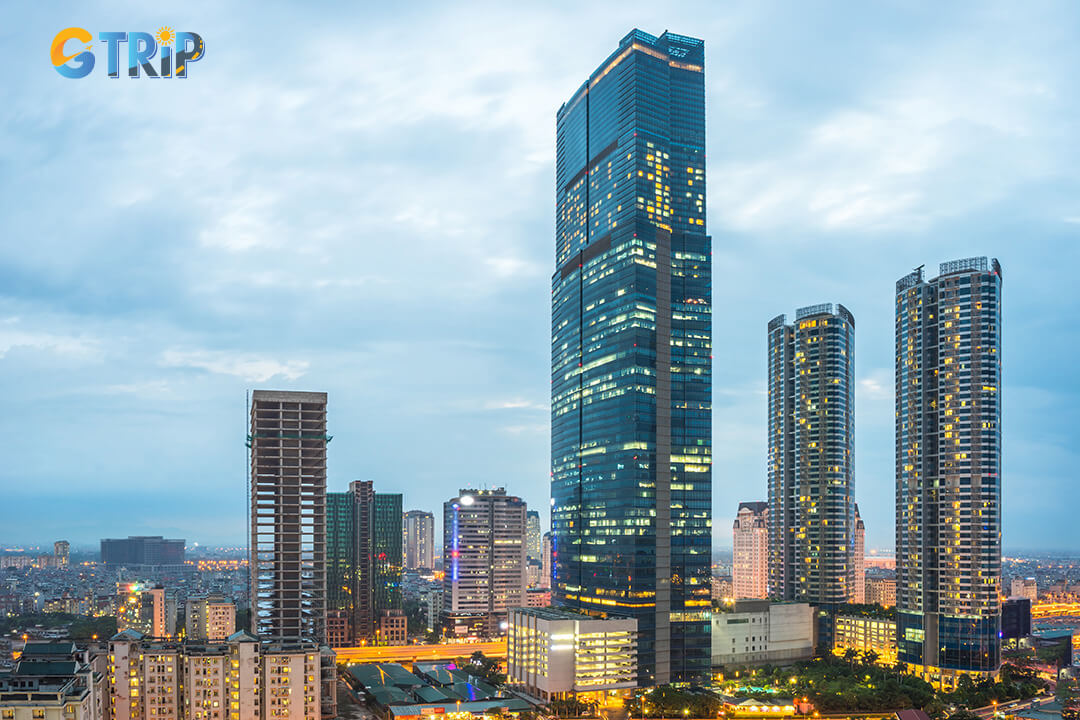
Just a 10-minute walk from Hanoi Museum, Keangnam Landmark Tower offers panoramic city views, luxury facilities, and a glimpse of Vietnam’s modern skyline
GO! Thang Long
GO! Thang Long provides an authentic glimpse into modern Vietnamese consumer culture. This sprawling shopping complex spans multiple levels with a mix of international and local retail outlets catering to every shopping need. The building's bright, contemporary design houses hundreds of stores selling everything from fashion and electronics to traditional Vietnamese crafts.
Food enthusiasts will appreciate the diverse dining scene featuring both Vietnamese and international cuisines at various price points. The upper-level food court serves affordable local dishes, while standalone restaurants offer upscale dining with panoramic district views. Cinema lovers can catch the latest international and Vietnamese films at the modern multiplex theater equipped with state-of-the-art screening technology.
Families visiting with children will find the dedicated play areas particularly appealing, especially during Hanoi's hot summer months or rainy season. The center frequently hosts seasonal events, cultural performances, and promotional activities that provide insight into contemporary Vietnamese urban life and consumer trends.
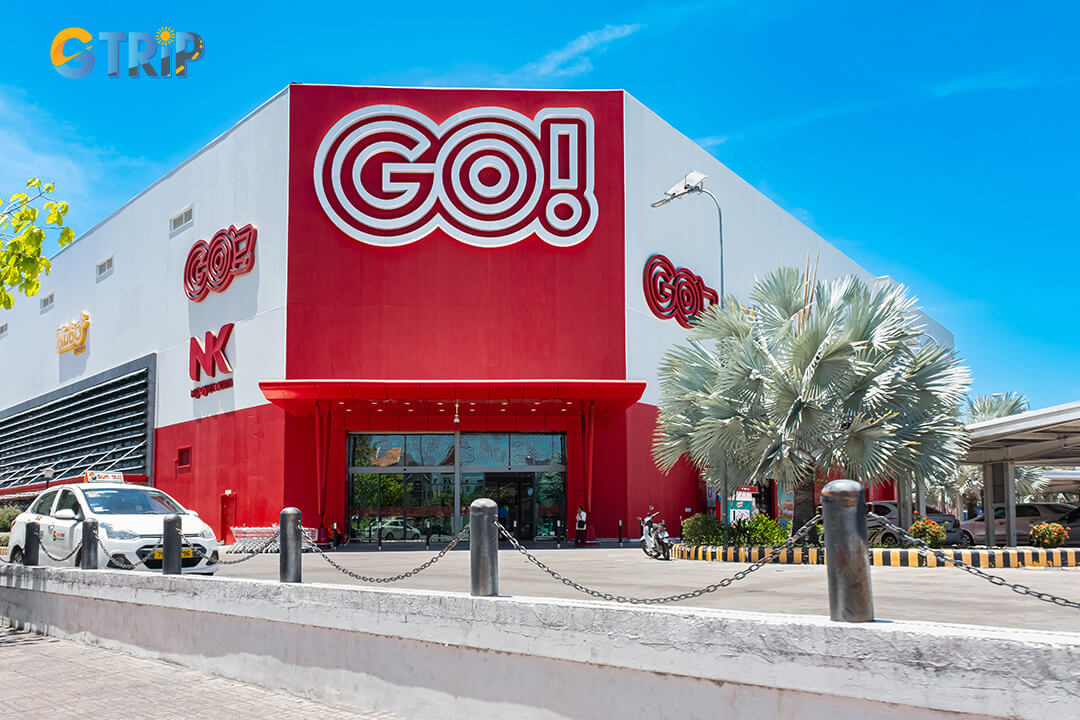
GO! Thang Long is a modern shopping and entertainment center offering retail, dining, and family activities that reflect contemporary Vietnamese consumer life
Visiting the Hanoi Museum connects you deeply with Vietnam’s rich history and culture, inspiring reflection and appreciation. This journey leaves you enriched with vivid stories and insights that illuminate the past yet resonate today. If you're planning your next adventure or simply seeking a deeper understanding of this vibrant city, your visit here enhances your perspective on Hanoi’s remarkable heritage.
Reflecting on your visit may spark curiosity, future travels, or conversations with fellow history lovers. By embracing these narratives, you ensure your experience is more than just a memory. It becomes part of the broader mosaic of cultural appreciation, a worthwhile endeavor you've gifted yourself. As you move forward, consider delving deeper into related journeys GTrip can facilitate, promising even more enlightening adventures ahead.

